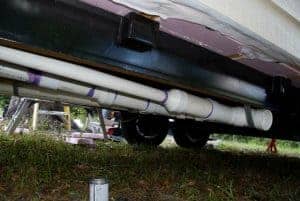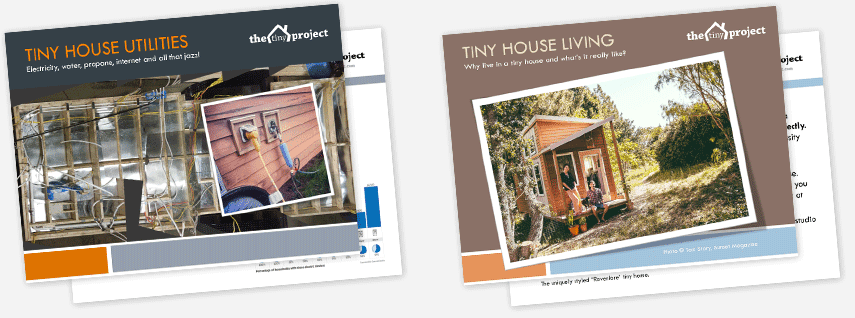Questions about tiny house plumbing
As I continue to refine my plans and attempt to think of all problems before they arise, and am left with a few hang-ups. One being: How do I winterize my exterior plumbing? And: How should I design to reduce the need/headache for winterization, if I end up living in a climate where cold winters are a reality?

Example tiny house plumbing
I'm still seeking answers to these questions, and would love your input.
One thing I am considering is to keep as much of the graywater drainage within the insulated walls, only exiting in the house in one, or maybe two spots. This is a bit complex, as I intend to include a shower, bathroom sink, kitchen sink, and combo washer/dryer unit. The two bathroom items, and the kitchen sink are all in pretty close proximity. I think I can funnel the two sinks into the shower drain (by keeping those pipes in the walls and sub-floor). But the washing machine is on the other side of the house. I don't want to seriously compromise the insulation throughout both walls and floor by crisscrossing my already small insulatable area it with 2-inch PVC drainage pipes. I guess I need a second exit for that.
All-in-all, I'm looking at potentially two exits through the sub-floor. Both will require p-traps under the house, as there is no space internally. If I'm dealing with freezing winter temps, I'm guessing that means one or two sets of heat tape and insulation to keep those from freezing. I also have to worry about keeping incoming fresh water un-frozen as well.
Anyone have some good electric heat-tape recommendations?
Do you have working setup that is much different than the above?
I've love to find out more about what others are doing with their plumbing in colder climates.



How did you remedy this problem?
I ended up living in a very temperate climate where it rarely freezes. Nonetheless, I put all my pipes in the insulated portion of the house except for one very short length of drain pipe. If I was in very cold temps and could simply wrap that pipe with heat tape and some insulation.
I am living in northern MN where solutions for this problem are needed. Building in the spring. Wondering if you anyone has come up with simpler solutions than I? Please help.
You don't need P-traps for tiny houses unless they are connected to the sewer or septic. P-traps are to stop sewer gases and since grey water is not sewage there are no gases. Just drain the liquid straight out the bottom, using a pipe to direct the water away from the trailer and into suitable outside drainage like plants or rocks. You can put each drain into a common pipe via tees if you want. About the only thing you need to consider is blocking the drain from various and sundry critters getting in through the pipes. If you are running water daily then the water flow alone should take care of bugs, and maybe some kind of chicken wire on the end to handle mammals and reptiles 🙂
I live in Quebec where Temp can go as far down as -30C.
Drains can run outside on a quite long distance without worrying they might freeze: the water is warm enough to run through the pipe. I guess there is a limit, but it is not a concern for a tiny house dimension.
P-traps are an issue if they are exposed to cold. I would not use electric heat tape: way too stressful in case of a power shortage.
Pierre is right: you don't necessarily need them. I have P-traps for the kitchen and bathroom sinks but none for the shower.
The downside of not having Ptraps are:
- ants and mosquitoes find their ways
- cold draft in the winter coming from the pipe
- odour coming from the dry-well (greywater)
Because how to deal with greywater in the winter? I don't want it to accumulate on the soil and create a layer of ice mixed with soap, hair, foodwastes, etc... It will be disgusting, specially when spring arrives.
So I dug a hole as deep as I was willing to (not more than 2' because then it was clay...) about 4' by 4'
My drain goes into that hole, ending at the top of an upside-down 5 gallons bucket.
I then covered the hole with organic stuff like grass clipping, tree leaves, straw, woodchips until i got a decent layer. The idea is to avoid the water that will accumulate there to freeze and allow it to find it's way into the soil. So those organic layers act as insulation, but also the composting action generate heat. I covered the hole thing with a small tarp to avoid the risk of a flash-freeze when it rains a lot and freezes again (climate change i guess...)
It has been a trouble-free system last winter. Clay does collect water, so sometime we had to be careful not to take a shower for too long. We could hear the pipe filling up.
I will add more organic stuff this fall because the pile shrank a lot.
Good luck!